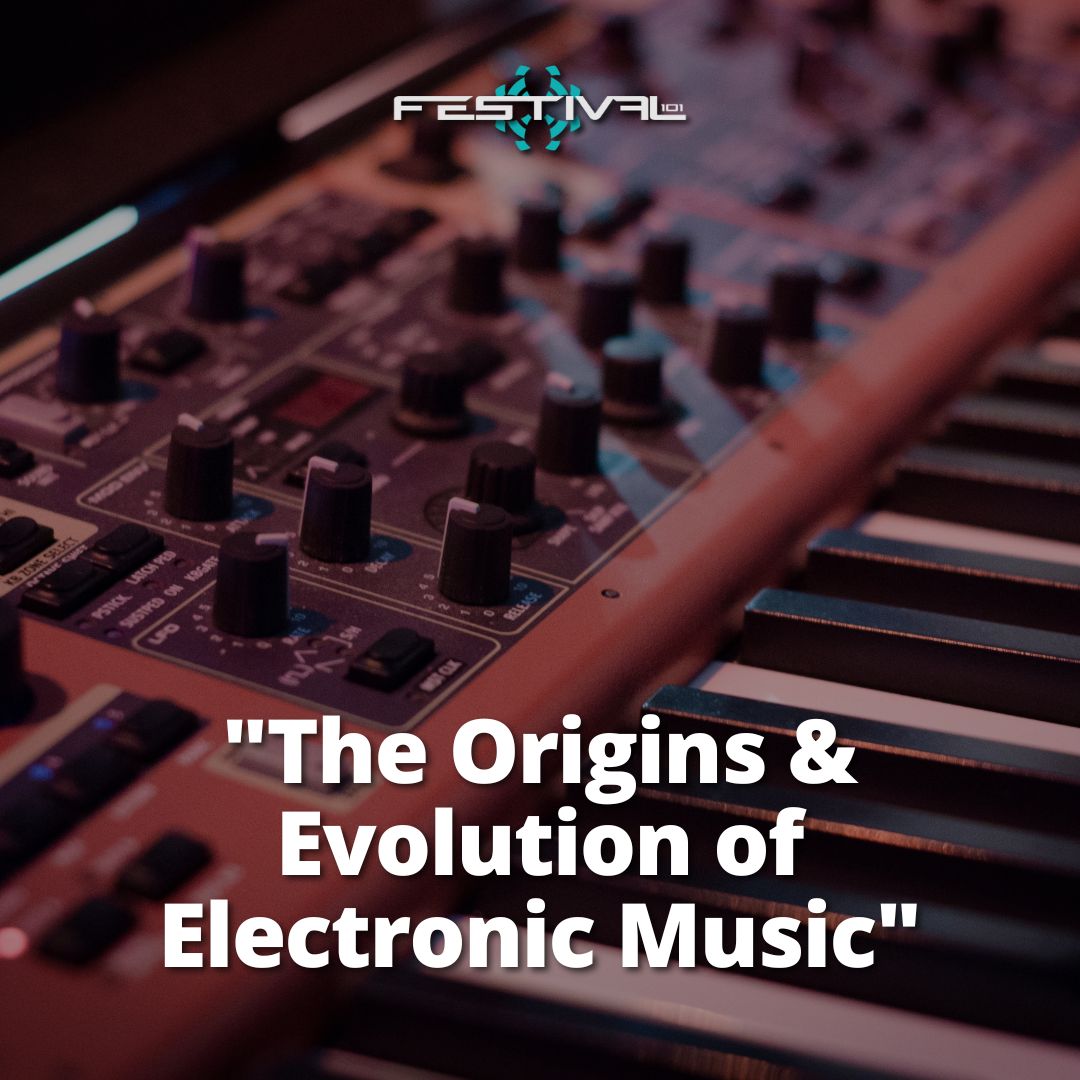The Origins and Evolution of Electronic Music

Electronic music has revolutionized the music industry, captivating listeners with its unique sounds and futuristic appeal. From its humble beginnings in the mid-20th century to its widespread influence on popular culture today, electronic music has continually pushed boundaries and redefined what is possible in the realm of sound. In this blog post, we’ll delve into the origins and evolution of electronic music, tracing its path through various genres and exploring the innovative artists who have shaped this captivating musical landscape.
The Birth of Electronic Music:
The roots of electronic music can be traced back to the early 20th century, with the advent of electronic instruments and the exploration of new sonic possibilities. One of the pioneers in this field was Russian engineer and inventor Leon Theremin, who developed the theremin in 1920. This instrument, played by moving one’s hands in proximity to two antennas, was one of the first purely electronic musical instruments, creating ethereal and otherworldly sounds.
In the 1940s and 1950s, significant developments in electronic music took place with the invention of the tape recorder and the emergence of musique concrète. Musique concrète, spearheaded by composers Pierre Schaeffer and Pierre Henry, involved manipulating recorded sounds, such as natural noises and everyday objects, to create unique musical compositions. This approach paved the way for further experimentation in electronic sound.
The Rise of Synthesizers:
The introduction of the synthesizer in the 1960s brought electronic music to new heights. The modular synthesizer, developed by Robert Moog and Don Buchla, allowed musicians to manipulate and generate sounds through voltage-controlled oscillators, filters, and amplifiers. Artists like Wendy Carlos and Kraftwerk popularized the synthesizer, showcasing its potential for creating innovative and futuristic music.
The Birth of Electronic Dance Music (EDM):
In the 1970s and 1980s, electronic music began to make its way into dance clubs and underground scenes, giving rise to electronic dance music (EDM). Genres such as disco, house, and techno emerged during this period, with influential figures like Giorgio Moroder, Larry Levan, Frankie Knuckles, and Juan Atkins shaping the sound of dance music.
Disco music, with its pulsating beats and infectious melodies, laid the foundation for many electronic dance genres. It reached its peak in the late 1970s, thanks to artists like Donna Summer and the Bee Gees. In the 1980s, the emergence of house music in Chicago, characterized by its repetitive beats and soulful vocals, brought a new wave of electronic sounds to the forefront. DJ Frankie Knuckles, known as the “Godfather of House,” played a pivotal role in popularizing the genre.
Simultaneously, in Detroit, techno music emerged as a response to the decline of the city’s industrial economy. Artists like Juan Atkins, Derrick May, and Kevin Saunderson pioneered this genre, fusing elements of electronic music, funk, and futuristic soundscapes. Techno’s driving beats and hypnotic melodies laid the groundwork for many subsequent electronic music genres.
Expanding Horizons:
Subgenres and Global Influence: As the 1990s unfolded, electronic music continued to evolve and diversify. Subgenres such as trance, drum and bass, ambient, and trip-hop gained prominence. Trance, characterized by its euphoric melodies and repetitive structures, reached its peak popularity in the late 1990s and early 2000s, with artists like Armin van Buuren and Paul Oakenfold leading the way.






